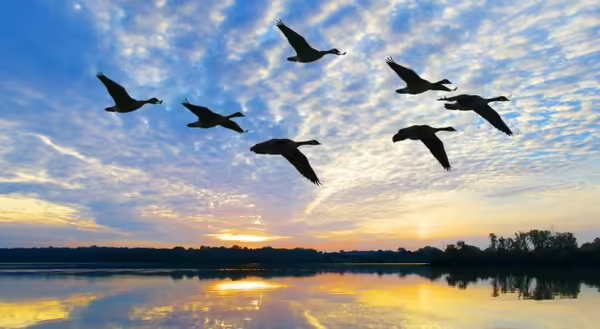
Anyone who comes into contact with birds should be aware that avian influenza cases are on the rise in Illinois and around the Midwest.
What is avian flu?
Avian influenza is a highly contagious virus that spreads naturally among wild birds, sometimes without causing illness. However, avian influenza can infect domestic poultry with devastating effects. Some so-called highly pathogenic strains of avian influenza may cause severe disease and high mortality in domestic birds like chickens and turkeys.
How does avian flu spread?
Infected birds spread the virus to other birds. Humans also serve to spread disease because the virus can persist on our hands, clothing, shoes, and tools when we work around flocks of infected birds. Luckily, the risk to humans has been low thus far. However, nearly 100% of birds in a flock will be infected and die from this respiratory disease, with visible symptoms including runny eyes, swelling, and lethargy. The fastest way to squelch an outbreak is to end the suffering of infected birds and to dispose of them properly, thereby preventing further disease spread.
From 2014 to 2015, there was a massive outbreak of avian influenza in the United States, particularly in the Upper Midwest, at the intersection of the Central and Mississippi flyways used by wild birds like ducks and geese for migration. More than 200 commercial flocks and 21 backyard flocks were affected, leading to the deaths of more than 50 million birds and a federal outlay of $879 million.
Precautions for flock owners, bird watchers, and hunters
If you have a backyard flock, bird feeders, or are harvesting wild turkey this spring, it is important to take some precautions to protect you and the birds.
The Illinois Department of Natural Resources has recommended bird feeders and baths be removed or cleaned weekly to reduce the likelihood that birds will gather and spread the virus. While avian influenza usually does not affect songbirds, it is always a good idea to keep feeders clean and to watch for signs of illness in wild birds. Feeder birds are susceptible to salmonellosis, which starts when bird food gets wet and creates ideal conditions for the growth of Salmonella bacteria. The best remedy is to keep feeders clean and remove them at the first sign of illness in wild birds.
The USDA has developed biosafety protocols for working around backyard flocks. These are best practices for anyone working around wild birds to reduce the risk of spreading bacteria or viral pathogens between animals or from animals to humans.
Protecting wild birds
Avian influenza primarily affects geese, ducks, and other waterbirds in the wild, says Auriel Fournier, avian ecologist and director of Forbes Biological Station. Raptors are sometimes affected — e.g., bald eagle deaths have been reported in areas with bird flu.
Staff at the biological station, which is located along the Illinois River on Chautauqua National Wildlife Refuge near Havana, Ill., conduct research on a variety of topics relevant to wetland ecosystems, with a specific focus on the ecology and management of wetlands, waterfowl, and other waterbirds. During the 2022 avian influenza outbreak, biologists at the field station have been taking extra precautions to keep captive birds safe from the disease, including sanitizing their boots, trucks, and gear after visiting wetlands on the site. Fournier suggests recreational birders clean off their boots after visiting parks with geese or ducks.
Support natural food sources for birds
With warming days, now is a good time to remove bird feeders to allow birds to find natural sources of food. Where those aren’t readily available, spring is a great time to plant fruit-bearing trees and bushes to provide the birds with lots of natural options. Also, planting and gardening for pollinators will support healthy insect populations for the birds to eat.
ABOUT THE AUTHOR
Dr. Joy O'Keefe is an Extension Wildlife Specialist in the College of Natural Resources and Environmental Sciences. Her research primarily focuses on ways to facilitate the coexistence of bats and humans in human-altered landscapes. She works to understand the roosting and foraging ecology of bats, identify best practices for studying bat ecology, characterize bat behaviors, and assess the quality of mitigation practices designed to help bats. Dr. O'Keefe collaborates with many organizations and people who interact with bats, including private landowners, USDA Forest Service, National Park Service, and state agencies.
ABOUT THE BLOG
Naturalist News is a blog by University of Illinois Extension Master Naturalist staff and volunteers who bring you stories highlighting the individuals, places, wildlife and plants that make this state amazing. Join us each week to learn something new, be inspired and become connected to your own community by recognizing the amazing ways we are all intertwined. Sign up for notifications when new Naturalist News posts are available.